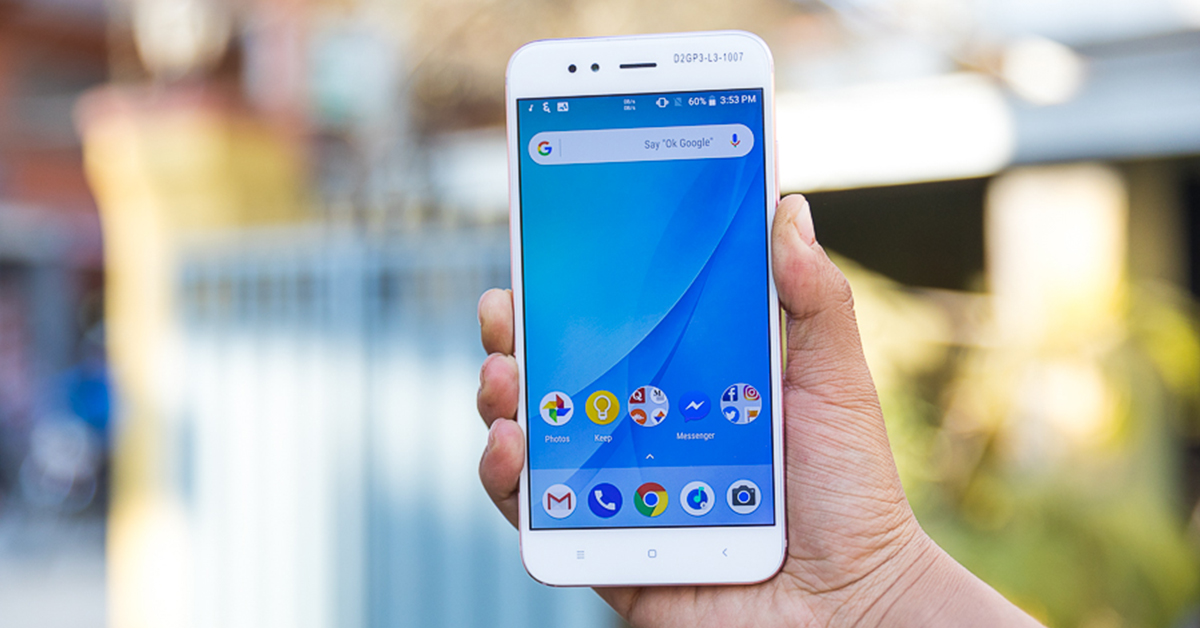
The mid-range section for smartphones is a crowded mess. To stand out in the crowd, the phone certainly needs to have something extra that grabs the users attention. The recently launched Mi A1 from Xiaomi offers an extra camera which is something unusual in the mid-range section in Nepal. Not only dual cameras but Xiaomi has partnered with Google to incorporate Stock Android on the Mi A1, hence the title “When two worlds collide” and also i am also a huge Iron Maiden fan.
If you are not aware, it’s the first phone from Xiaomi to opt for stock android ditching its beloved MIUI ROM. Let’s find out how this phone stacks up against other phones in the market.
Specifications of Xiaomi Mi A1
- Display: 5.5 inches LTPS IPS (1080×1920) @403ppi
- OS: Stock Android 8.0 Oreo
- Chipset: Qualcomm MSM8953 Snapdragon 625
- CPU: Octa-core 2.0 GHz Cortex-A53
- GPU: Adreno 506
- RAM: 4GB
- ROM: 32GB/64GB extendable up to 256 GB (uses SIM2)
- Rear camera: Dual: 12 MP (f/2.2, 26mm) + 12 MP (f/2.6, 50mm), phase detection autofocus, 2x optical zoom
- Selfie- camera: 5MP
- Connectivity: Hybrid Dual SIM Nano-SIM, dual standby), WIFI b/g/n/ac, Bluetooth 4.2, USB Type C
- Sensors: Fingerprint sensor (rear- mounted), Proximity sensor, Accelerometer, Compass, Ambient light.
- Battery: Non-removable Li-Ion 3080 mAh
- Price: 32GB: Rs. 27,000 , 64GB: Rs.30,000
Build and Design:
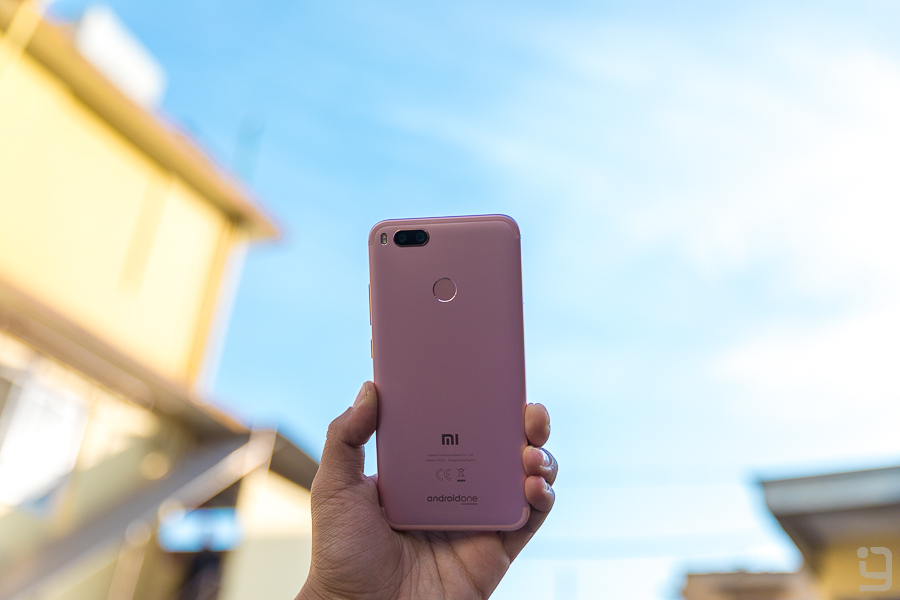
The Mi A1 is one of the prettiest looking phones under the price of Rs.30,000. One might say it looks like the iPhone 7 Plus and it certainly does, which is not a bad thing by any means. This phone is a rebranded Mi 5X which didn’t make it to the Nepali market. It has a unibody metal construct with a smooth polished back. But mind that, it’s winter and holding a cold metal phone early morning is certainly not a good feeling. Nonetheless, the phone has a premium feel to it and stands solidly at 165 grams. If you want to make it fancier, you can get the rose gold color. You might have already noticed the protruding camera bump which makes the phone shaky while using it placing on the table.

Up front, the MI A1 looks like any typical Xiaomi Device, moreover, like the Redmi Note 4, further similarities remain, which we will discuss in later parts of this review.
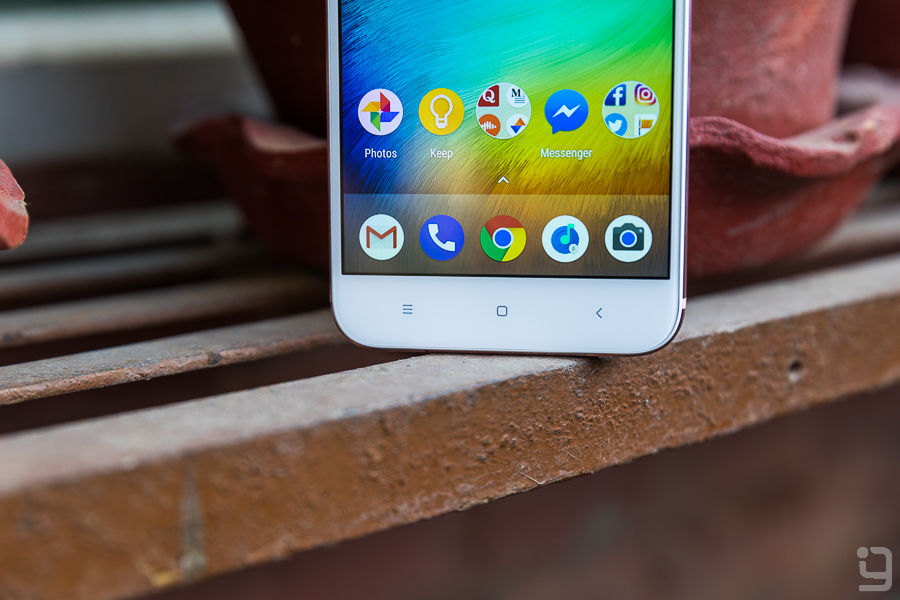
The phone has a huge chin and forehead with capacitive navigation buttons residing on the chin. They are backlit and the response is really good.
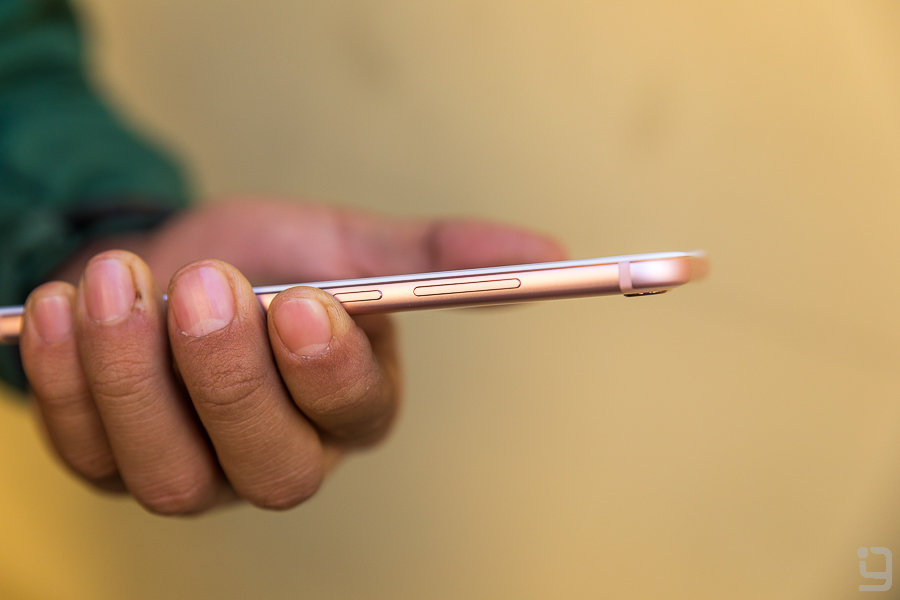
On the right side, it has power and volume buttons providing tactile feedback. On top it has IR blaster, a missed out feature by many – but a really handy feature to have. And coming down to the bottom, we can find a USB C port which still is hard to find on most of the mid-range devices. It is accompanied by a single mono speaker on the right and a headphone jack on the left.

I would certainly not rate this phone as one hand usable. The huge chin coupled with smooth metallic back makes it slippery and there was more than few occasions where it slipped out of my hand. So this phone is Gadgetbyte Certified Slippery, so a cover is a must!
Display:
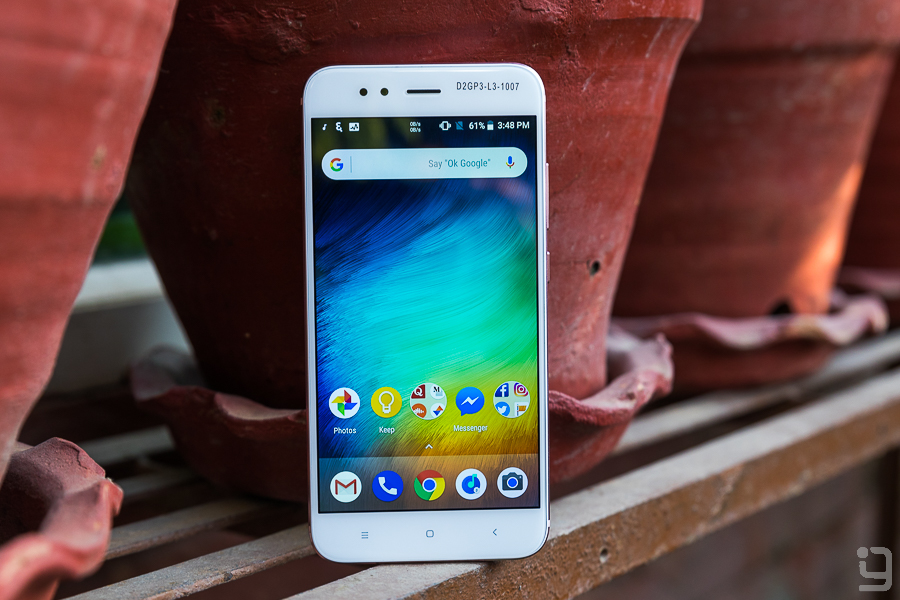
The Mi A1 comes with a full HD 5.5-inch LTPS IPS display. An LTPS panel means it provides high pixel density and low power consumption. The display has 2.5D glass and it’s protected by Corning Gorilla Glass 3. The Color Reproduction is good and the display is well saturated. The contrast is one of the best on a mid-range device with 1000:1 contrast ratio. But an AMOLED panel like that of the J7 Pro definitely beats this number.
The viewing angles are good, I found no signs of color shifts while holding the phone as per my comfort. You’d definitely enjoy Watching Videos, playing games and reading on this sharp display.
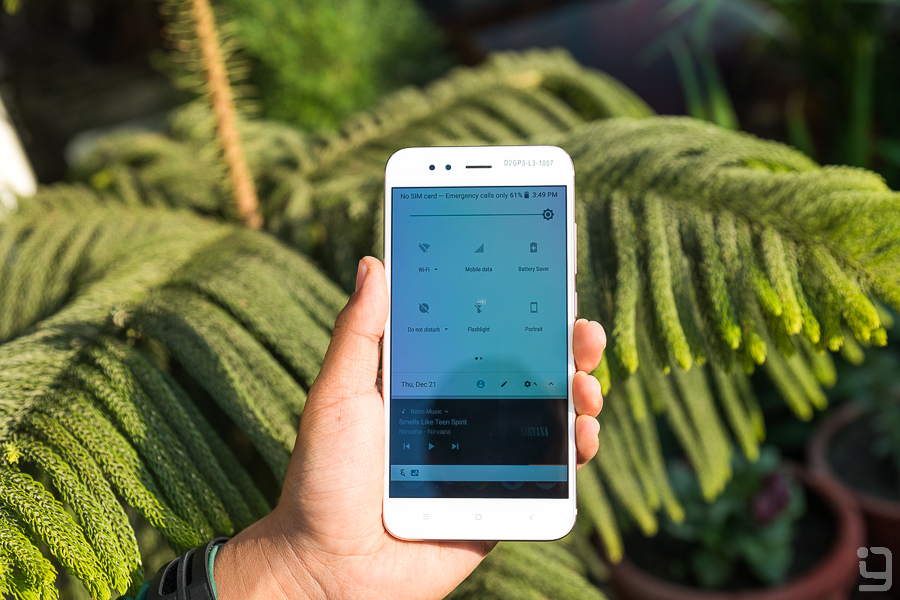
This panel has a maximum brightness of 450 nits, well enough to view under direct sunlight.
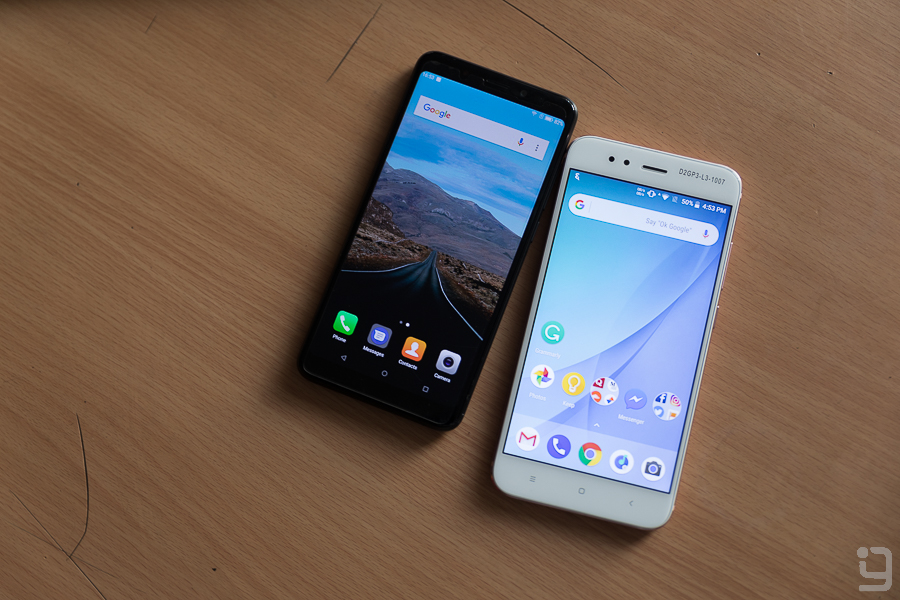
But on the downside, these days we already have phones with the tall 18:9 display and the Mi A1 sports the usual 16:9 panel. This may be a dealbreaker for some. So what do you think? Is it crucial to have a tall 18:9 panel on a smartphone or are you okay with the usual 16:4 aspect ratio? Have your say in the comment section below.
Software/UI:
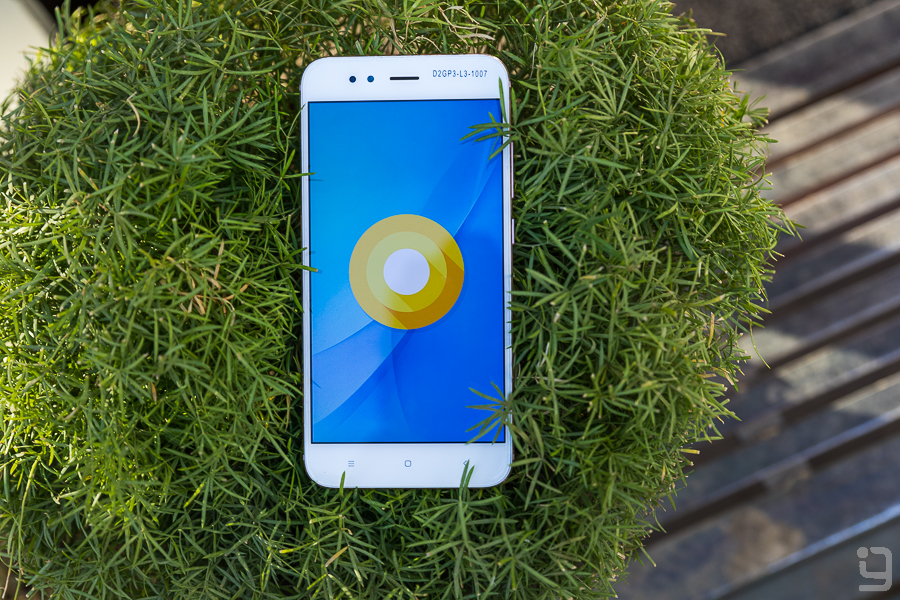
For me, MIUI is one of the best UI after Vanilla Android. Like mentioned earlier, this is the first Xiaomi phone to ship with Stock Android under the Android One program. Comparing MIUI against the Stock Android, you can see the world of difference.
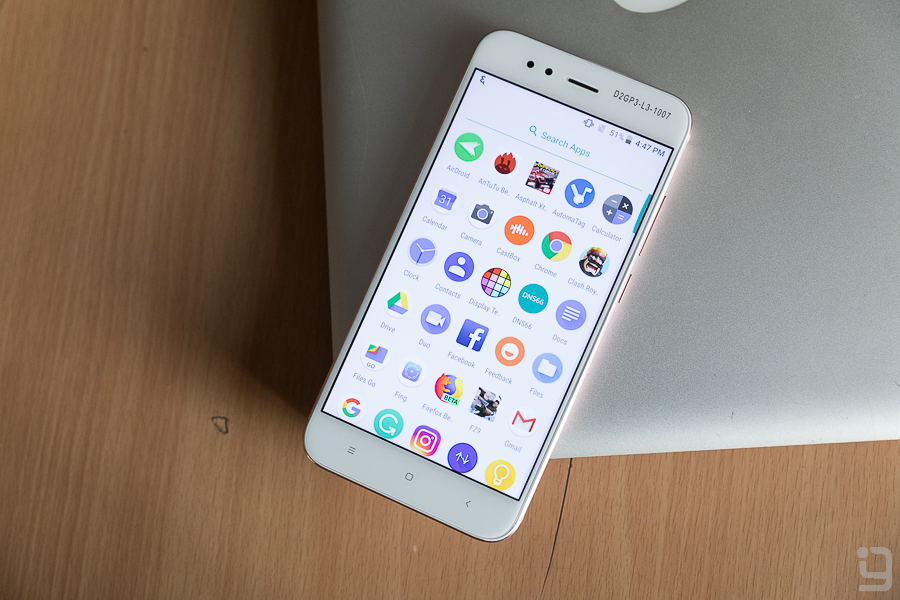
If you thought Xiaomi’s hardware selection was great but the MIUI turned you off then Mi A1 is what you’ve been waiting for. Apart from the Camera app and the Mi Remote app, rest of the System is directly handled by Google, which means timely Android update.

And to my surprise, I received the Oreo 8.0 update just after a few days I took this phone out for review. Since then, I have been getting few security updates and bug fixes every now and then. It’s really a happy experience when your phone shows Update Available every once in awhile, it’s certainly not something you’re used to with a mid-range device.
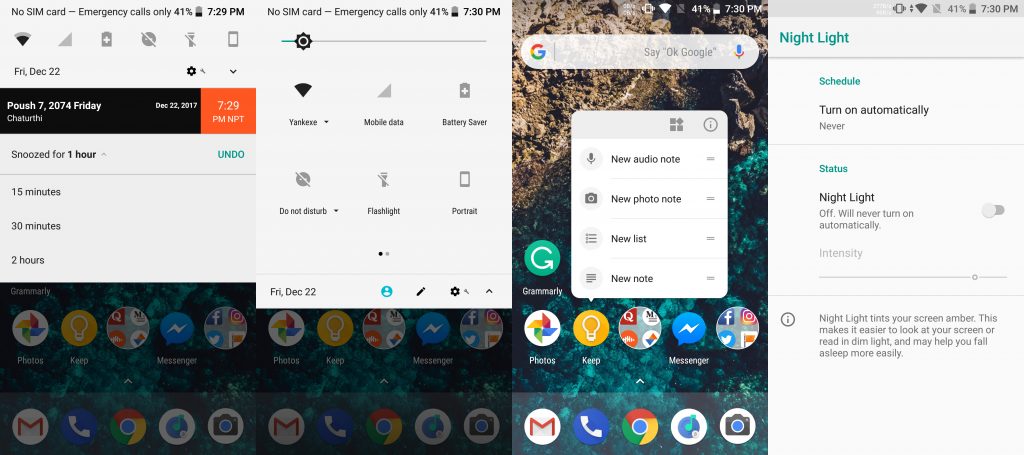
Since it’s vanilla Android, there’s nothing extraordinary here, if you’re an MIUI user then the plainness of the UI might set you back. The small things I liked about Oreo is the faster app installation time, quick shortcuts on apps, well-bundled settings menu and notifications as well as notification snoozing, inbuilt night mode, ambient display and swipe down on fingerprint to access the quick settings and notification panel to name a few.
So overall, it’s stock android, it’s smooth, it’s great and it gets tons of updates.
Performance:
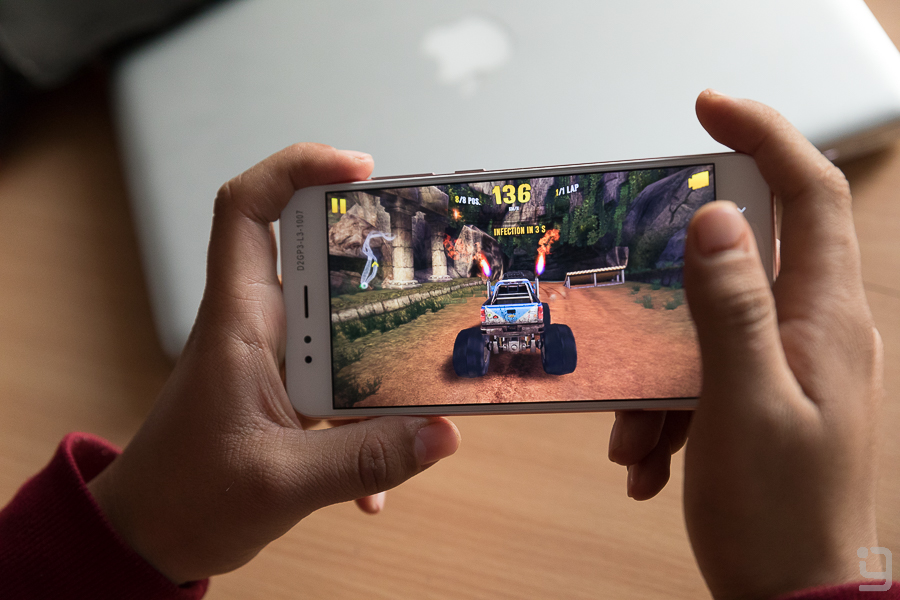
Performance in a mid-range device is Xiaomi’s forte and they have opted for the trusty octa-core Snapdragon 625 chipset for the MI A1. And in my opinion, it’s the perfect chipset for phones under Rs.30,000. With 14nm architecture, it is both powerful and power efficient. It is coupled with 4GB of RAM.

The same configuration can be found on the now popular Redmi Note 4. With Stock Android at hand, the Mi A1 slightly outperformed the Note 4 on benchmarks. Well, on the real-life usage, it’s really hard to differentiate in their performance. The opening of apps, general navigation, scrolling web pages, and every other thing you do on a daily basis is a breeze for this chipset.
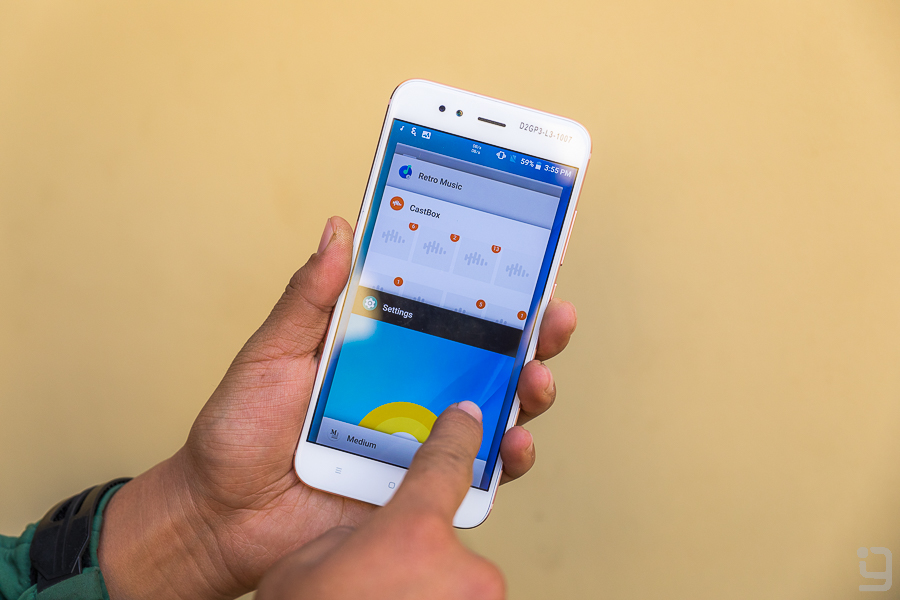
With 4GB of RAM on its arsenal coupled with Oreo’s optimized memory management, you can well shuffle between 6 to 7 apps or more with ease.
When it comes to gaming, the combo of Snapdragon 625 with Adreno 506 does more than justice for the gamers. Titles like Asphalt 8 Xtreme, Shadow Fight, FZ9 ran without any lags or frame drops. The game opening time was also fairly fast. If you have checked out the Redmi Note 4 then the performance is no different here. Xiaomi has used dual pyrolytic graphite sheets to dissipate heat effectively and playing Asphalt Xtreme for an hour or so I could only feel a mild warmth on the back. So good job on heat management Xiaomi.
Also, I must not forget to mention the single mono speaker of the phone with a 10v amplifier which is loud and crisp making the gaming experience even more engaging. Listening to music on loud volume didn’t affect the clarity as well. So, Mi A1 is a complete package if you are looking for a mid-range phone you can game on.
Camera:
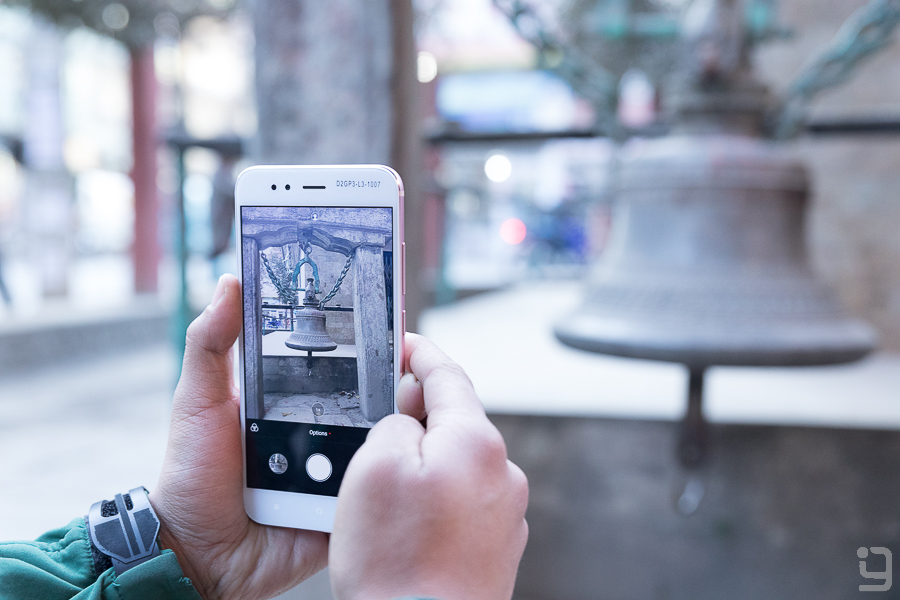
Now the dual camera is something we don’t see very often in mid-range devices. The one that I know of in particular is the Coolpad Cool 1 which is priced similarly to the Mi A1. The MI A1 comes with a pair of Dual 12MP Camera on the back. The primary shooter is a wide-angle 26mm f/2.2 lens while the assisting shooter is a 50mm f/2.6 telephoto lens. The telephoto lens provides 2x optical lossless zoom like the iPhone 7 and the OnePlus 5. We compared its Camera with Oppo F5, Nova 2i, M7 Power, and J7 Pro.

As you can see the photos on the first glance look pretty normal but upon comparing with aforementioned devices, a green tint is evident on most of its images. This green tint made sure the colors looked disorientate. So Mi A1 misses out on the color accuracy. On the contrary, contrast is pretty good on photos.
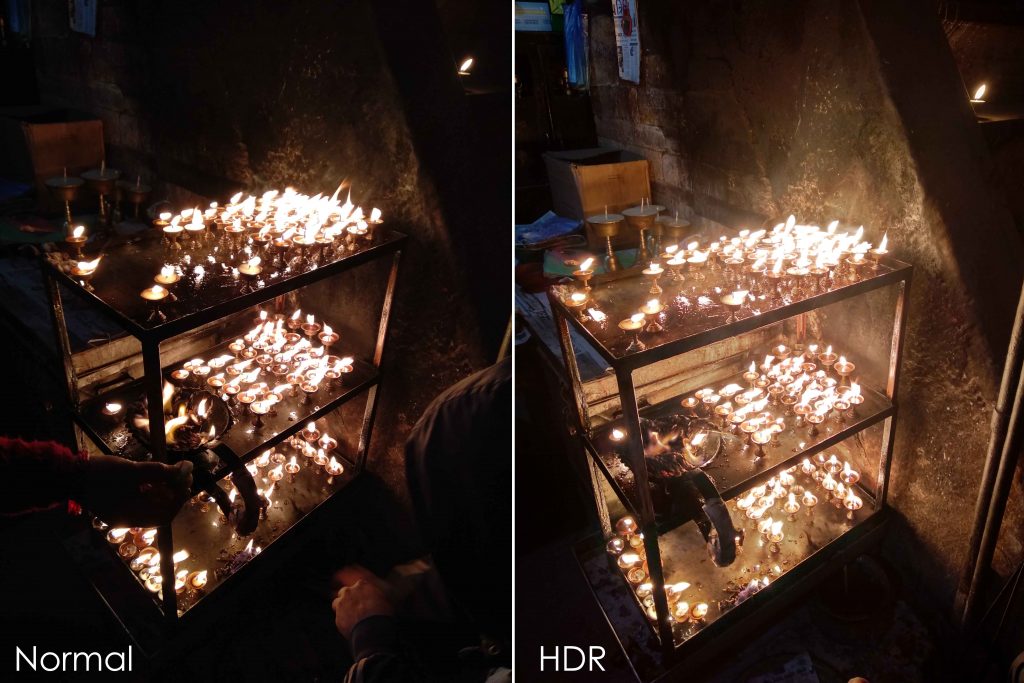
Turning on the HDR mode brings out details from the shadows pretty well but misses to bring out better colors. Having said that the dynamic range is also acceptable.
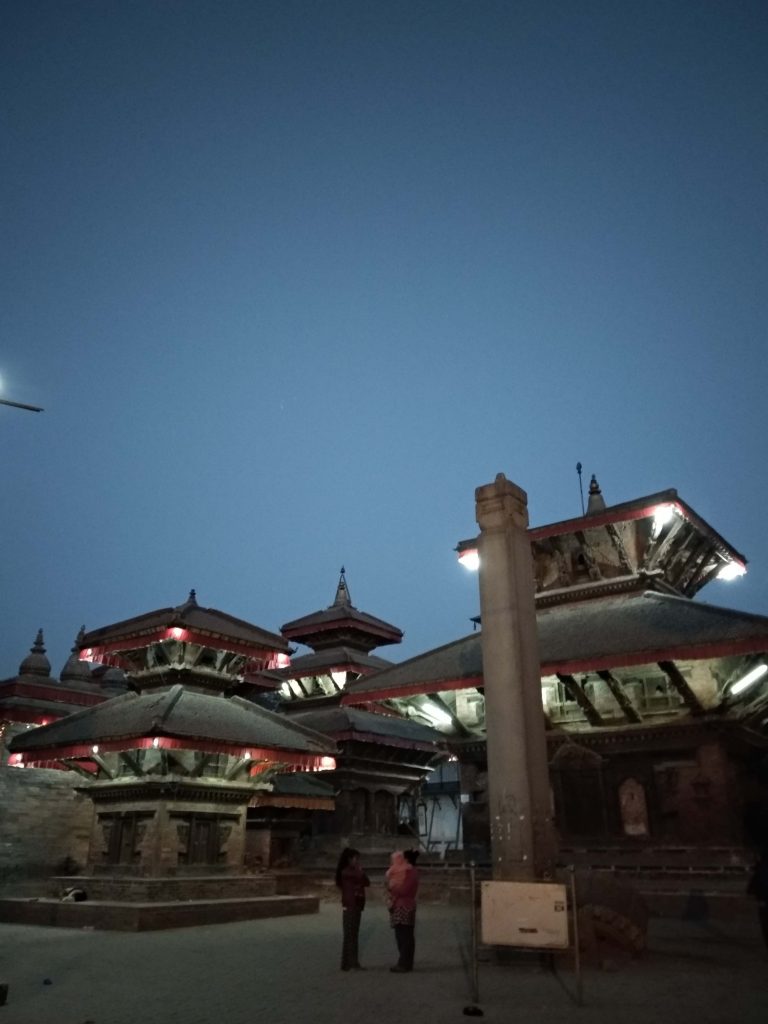
When it comes to low light performance the smaller f/2.2 aperture doesn’t let in much light. The images are washed out, the details are not there and grains can be found thoroughly spread across the image.
Now let’s talk about those dual cameras, first off, at good lighting conditions it creates one of the most natural looking bokeh. Bokeh on smartphones are usually a hit or miss but here the separation between the subject and the background is very smooth most of the time. Not only people but it does a good job with regular objects as well.

But mind that, it’s only possible with good lighting, whereas on poor lighting the bokeh has lots of grains and doesn’t look that appealing.
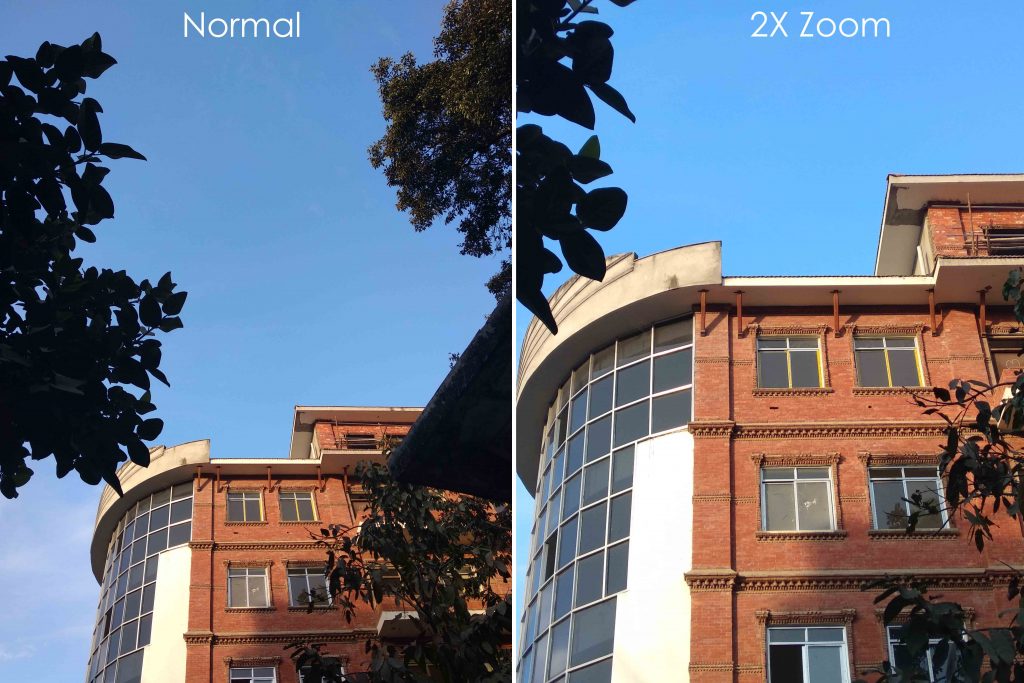
The 2x optical zoom is a handy feature, the quality is good and can be useful for zooming in far away object.
Xiaomi has implemented its own camera app on the phone and I found it’s manual mode very interesting, it allows you to have manual control on either the wide primary lens or the telephoto lens. Mi A1 can shoot 4K at 30fps and the quality looks good with natural colors. With no stabilization, it is shaky but the details are justifiable. As you might have already guessed the audio quality is pretty bad.

Now coming to the 5MP front-facing camera, the images it produces are good enough for social media with good lighting. However, if you are savvy about selfies then the details are not there and it looks washed out.

And with little deficiency of light it produces washed out images with lack of details. It also doesn’t sport any selfie flash.
Connectivity:

For connectivity, Xiaomi offers a hybrid nano-SIM slot which utilizes SIM 2 slot for microSD expansion. If you are opting for the 32GB variant of this device then the expandability option will definitely prove to be helpful. But hybrid sim slots is not how we like to roll. Cellular reception and call quality were pretty good as well. Surfing the internet on NCell with 4G was also a breeze.

The phone offers IR blaster with which you can control TV, AC and so on.

It utilizes USB Type C which I’ve only seen on GM5 Plus at this price. And if you are curious, it does support USB OTG. For wireless connection, it offers dual-band ac wifi meaning better WiFi reception and faster speed. It has Bluetooth 4.2. Talking about sensors, it has all the essential sensors including the Gyro for VR experience.

Not to forget, it also holds fingerprint sensor on the back. It is quick to setup and unlocks the device in a jiffy. Xiaomi phones always have had a reliable fingerprint sensor and this is no different.
Battery:
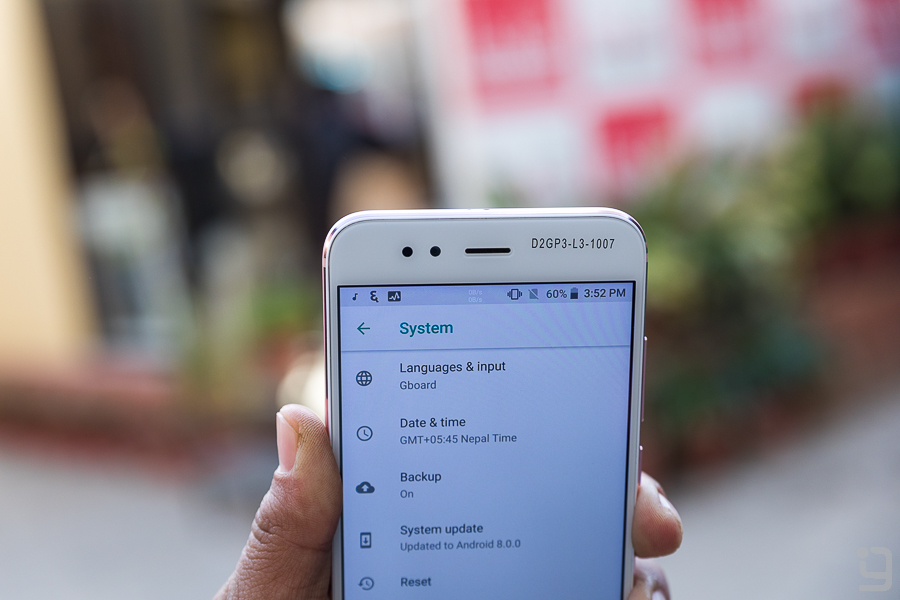
MI A1 offers 3010 mAh battery, a fairly smaller size compared to the Redmi Note 4. Smaller size surely means least screen on time and standby. I was able to pull out only 3 and a half to 4 hours. Well, it entirely depends on your usage but most of the time the battery lasted me for a whole day. The 5v 2ampere charger charges this phone from 0 to 30% in 30 minutes and 100% in around 2 hours.
Conclusion:
In conclusion, Mi A1 is a well-rounded phone under the price of Rs.30,000. It has got a lot more to offer compared to its rivals. The phone offers stock android with timely updates, has a sharp vibrant display, dual camera setup, smooth performance, and premium build to name some. But it surely falls back when it comes to front facing camera, so if you are someone who’s fond of taking selfies then this phone is definitely not for you. Also, the battery life could have been better. So, if you can live with an average selfie cam, an older 16:9 display, and a decent battery life, then this is the best phone you can buy below Rs.30,000 in Nepal.
| Pros | Cons |
| Stock Android | Weak front facing camera |
| Sharp display | 16:9 Aspect Ratio Display |
| Dual camera setup with Good Bokeh | Average Battery Life |
| Performance | |
| Premium built | |
| USB C | |
| Dual band ac wifi |












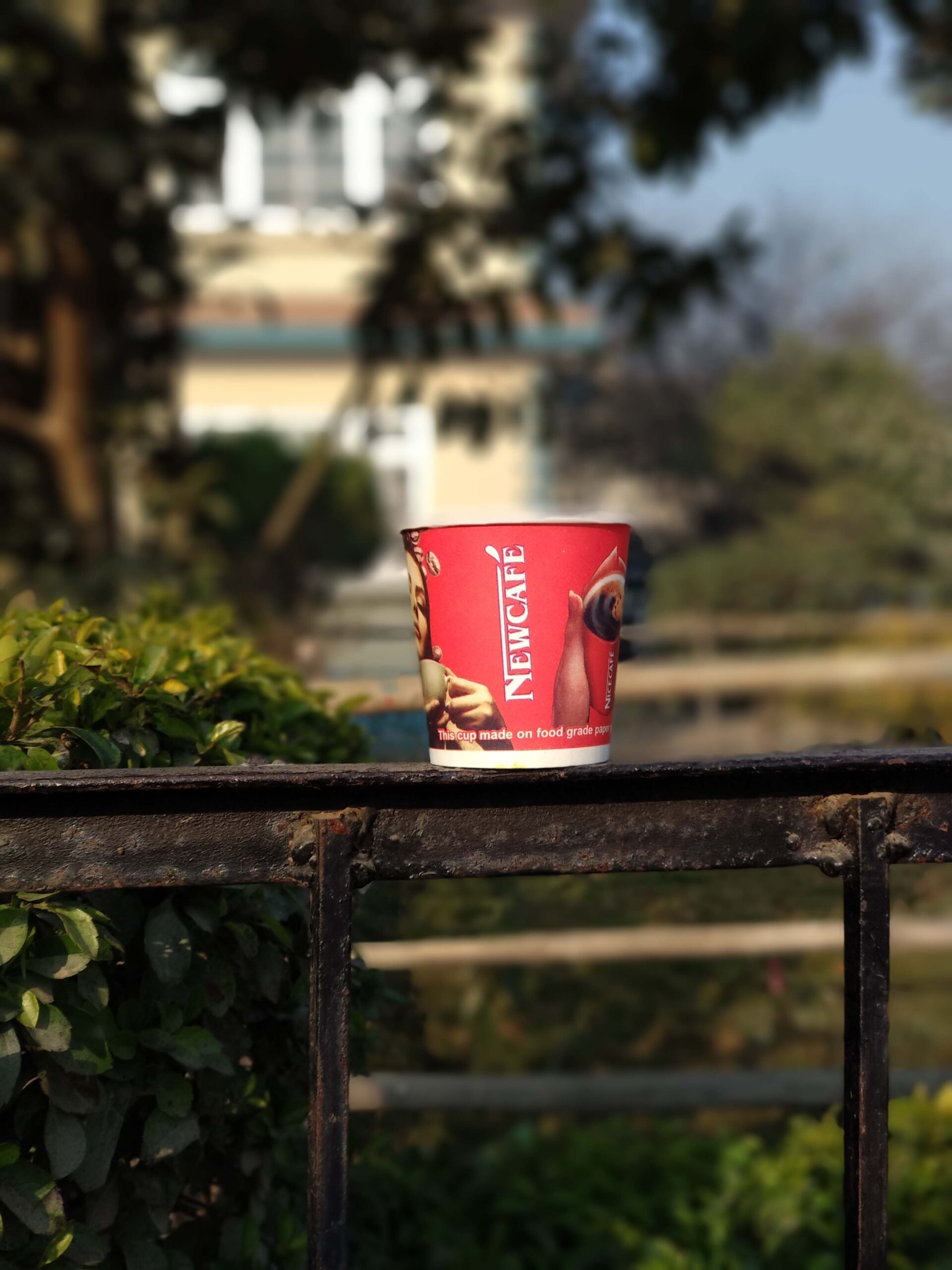






![Best Ultrabooks To Buy in Nepal 2024 [Updated] Best Ultrabook Laptops in Nepal 2023 - June Update](https://cdn.gadgetbytenepal.com/wp-content/uploads/2023/04/Best-Ultrabook-Laptops-in-Nepal-2023-June-Update.jpg)
![Best Gaming Laptops in Nepal 2024 [Updated] Best Gaming Laptops in Nepal 2023 - June Update](https://cdn.gadgetbytenepal.com/wp-content/uploads/2023/04/Best-Gaming-Laptops-in-Nepal-2023-June-Update.jpg)


![Best Mobile Phones Under Rs. 15,000 in Nepal [Updated] Best Phones Under 15000 in Nepal 2024 Budget Smartphones Cheap Affordable](https://cdn.gadgetbytenepal.com/wp-content/uploads/2024/03/Best-Phones-Under-15000-in-Nepal-2024.jpg)
![Best Mobile Phones Under Rs. 20,000 in Nepal [Updated] Best Mobile Phones Under NPR 20000 in Nepal 2023 Updated Samsung Xiaomi Redmi POCO Realme Narzo Benco](https://cdn.gadgetbytenepal.com/wp-content/uploads/2024/01/Best-Phones-Under-20000-in-Nepal-2024.jpg)
![Best Mobile Phones Under Rs. 30,000 in Nepal [Updated]](https://cdn.gadgetbytenepal.com/wp-content/uploads/2023/12/Best-Phones-Under-30000-in-Nepal-2024.jpg)
![Best Mobile Phones Under Rs. 40,000 in Nepal [Updated] Best Phones Under 40000 in Nepal 2024 Smartphones Mobile Midrange](https://cdn.gadgetbytenepal.com/wp-content/uploads/2024/02/Best-Phones-Under-40000-in-Nepal-2024.jpg)
![Best Mobile Phones Under Rs. 50,000 in Nepal [Updated] Best Phones Under 50000 in Nepal 2024 Smartphones Midrange](https://cdn.gadgetbytenepal.com/wp-content/uploads/2024/02/Best-Phones-Under-50000-in-Nepal-2024.jpg)
![Best Flagship Smartphones To Buy In Nepal [Updated] Best Smartphones in Nepal 2024 Flagship Premium Samsung Apple iPhone Xiaomi OnePlus Honor](https://cdn.gadgetbytenepal.com/wp-content/uploads/2023/09/Best-Smartphones-in-Nepal-2024.jpg)